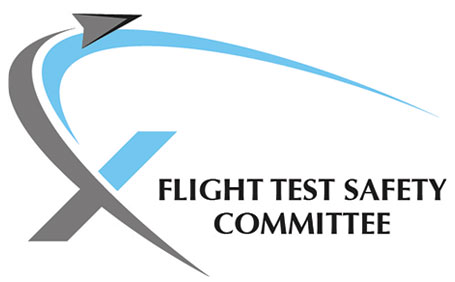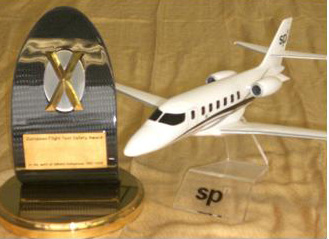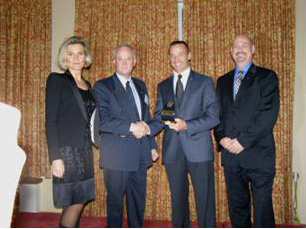The beautiful, city of Salzburg is not only the home of European classical music and the home of Red Bull Racing, but in November 2011, it was also home to the annual gathering of European test pilots at the Society of Experimental Test Pilot’s (SETP) Safety Workshop 2011. Against the themed backdrop of ‘Flight Test Demonstration of Prototype Aircraft’, forty experimental test pilots and flight test engineers from as far afield as Japan, the USA and South Africa, joined their European colleagues representing major and minor aircraft manufacturers, in bringing safety lessons learned to the fraternity with the view to preventing accidents during flight test demonstration flying.
The purpose of the three-day workshop was to develop benchmarked, best practice procedures, processes, checklists and to consider manoeuvre design to assist current and aspirant flight test demonstration pilots. Presentations by highly experienced flight test demonstration pilots, were real and relevant. More than ever though, it was apparent that adequate regulatory oversight existed, yet accident rates during display flying are not improving - far from it, they’re actually getting worse.
“High Performance Airshows vs. Product Demonstrations – and the Fickleness of Knowing the Difference” was the topic reviewed by Boeing F-18 Super Hornet display pilot Ricardo Traven, while Cassidian’s Eurofighter display pilot, Chris Worning, complemented the high performance jet deliberations, discussing "Displaying the Typhoon - Lessons Learned".
Ploughing back many, many years of experience, Patrick Experton, Mirage III, Mirage 2000 and Rafael test pilot, presented "Dassault´s View" on flight test demonstration flying, particularly the role of the flight test team and the monitoring of performance data during the actual display. The former Dornier chief test pilot, Dieter Thomas, dealt with the “Tricks of the Trade” gathered over more than 35 years of demonstrating new designs. Andrew Warner, Eurocopter’s chief test pilot, brought another dimension to the deliberations, discussing the idiosyncrasies of demonstrating helicopters in his presentation on "Rotorcraft Displays"; considering the high agility and manoeuvring margins of current helicopters, it is imperative that the flight test experience gained, particularly in terms of techniques and structural loads generated by such demonstrations, be passed on to helicopter pilots and the airshow community at large.
In what must be regarded as a first, the chief test pilots of Airbus and Boeing, Terry Lutz and Dave Carbaugh – combined their presentation to share the lessons of demonstrating modern ‘big jets’ in their presentation, “Displaying Transport Category Aircraft”. When it comes to flight test demonstration safety, there can be no petty jealousies or competitive arrogance, all survival and safety techniques and skills must be shared by the entire display community.
Lockheed Martin test pilot Wayne Roberts spoke in detail about the quintessential differences in "Displaying Fast Jets and Transports in Military Operations" while Tore Reimers asked, with respect to Shakespeare: “To Display or Not To Display – That is the Question” in which he addressed the fatal accident of Grob’s chief test pilot, Gerard Guillaumaud. The Grob G180 SPn suffered a flutter induced tailplane (elevators and left horizontal stabilizer) separation and crashed during a demonstration flight at the factory at Mindelheim-Mattsies Airport on 29 November 2006.
Delegates were also invited to share their lessons learned during demonstration flying and in this case, flight test engineer Christoph Schlettig gave an in depth description of the handling and performance challenges they faced in their flight test demonstration of the “Solar Impulse Display" at Le Bourget airshow. The Solar Impulse is the latest aerospace engineering innovation designed for ubiquitous twenty-four hours surveillance using solar energy; a wingspan of 63 metres, a takeoff mass of 1600 kg powered by four 10 HP, scooter engines – visionary thinking but presenting a whole new dimension to aircraft handling challenges.
Des Barker from South Africa’s Council for Scientific and Industrial Research (CSIR) provided the keynote introduction to the workshop by providing ‘A Safety Perspective on Test Pilots in Demonstration Flying" which included a look into the differences in low level demonstration philosophies between test pilots and non test pilots, the suggested selection criteria for flight test demonstration pilots and also proposed the “10 Rules for Display Flying Survival”.
Question raised. Is there a difference in the philosophy of low level demonstrations between test pilots and airshow pilots? Apparently yes. Statistically, it would appear that test pilots were involved in less than 10% of all air exhibition accidents over the past 103 years. Test pilots were the forefathers of airshows/display flying but separated from their non-test pilot brethren many years ago, for obvious reasons in the difference in objectives between flight test demonstrations and airshows.
What is certain is that it has become essential for test pilots to share their experiences and philosophies on risk management and sequence development with non-test pilots. Just maybe, a more scientific/systems engineering orientated approach could provide display pilots with a more holistic understanding of the energy management of each manoeuvre and also their risk budget for each manoeuvre. The entire display community needs to ‘compare notes’ in the way they go about risk management and display sequence planning, it may just be the remedy to ameliorate the unacceptably high loss rate currently on the world’s airshow circuit.
- Des Barker - “The Fickleness of Human Judgment in the Display Environment"
- Dieter Thomas - “Tricks of the Trade”
- Dave Carbaugh and Terry Lutz .- “Displaying Transport Category Aircraft”
- Patrick Experton - "Dassault´s View"
- Ricardo Traven - “High Performance Airshows vs. Product Demonstrations – and the Fickleness of Knowing the Difference”
- Chris Worning - "Displaying the Typhoon - Lessons learned"
- Paul Randall and Wayne Roberts - "Displaying Fast Jets and Transports in Military Operations"
- Tore Reimers - “To Display or Not To Display – That is the Question” by Tore Reimers
- Andrew Warner - "Rotorcraft Display" (tbc)
|
|
|
|
The European Flight Test Safety Award was founded by the fiancée of test pilot Gerard Guillaumaud, Ms Heidi Biermeier, after the fatal flight test demo accident of the Grob SPn. Recipients must be individuals who have made significant contributions in the area of safety within flight testing. |
Lockheed F-16 chief test pilot Billie Flynn (recipient 2010), presented the SETP European Flight Test Safety Award 2011 to retired Maj Gen Barker of the CSIR. Flanked by Ms Heidi Biermeir, Aviation Management and Communication, the award founder, and Cessna chief test pilot,Maurice Girard, President of the Flight Test Safety Committee. (Dr Dieter Reisinger) |



